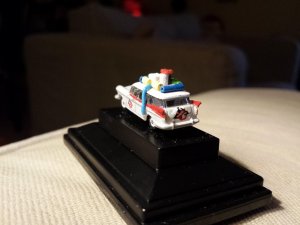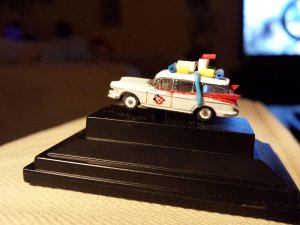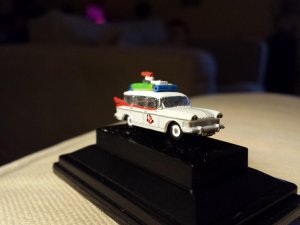Skipjacks
Member
The scope of this project is that I'm trying to turn this car...
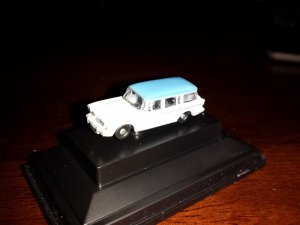
Into this car. (I saw the car at Klein's and immediately thought of Ecto 1 and couldn't pass up the project)
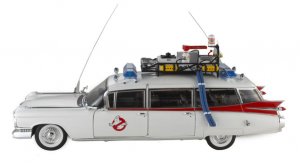
It's going well so far as you can see here. This is after about 2 hours of working on it. (Adding the tail fins was the tough part as they aren't part of the car I used)
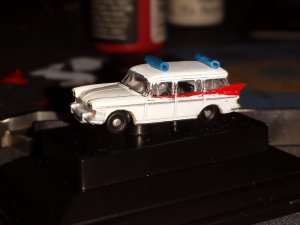
Where I'm stuck is how to do the Ghostbusters logo on the doors. It will be about 2mm across.
I tried downloading the logo, shrinking it, and printing it, but it's just too pixelated at that size and looks horrible. Even my industrial printer at work can't do the logo that small with any kind of decent resolution.
My hand simply isn't steady enough to draw it, even under magnification.
This is n scale. The car is a whopping 1 inch long.
Any of you super detailers have any suggestions on how to do this? I thought about stenciling it. That would let me apply the paint easily. But then I couldn't figure out how to make a stencil that small.

Into this car. (I saw the car at Klein's and immediately thought of Ecto 1 and couldn't pass up the project)

It's going well so far as you can see here. This is after about 2 hours of working on it. (Adding the tail fins was the tough part as they aren't part of the car I used)

Where I'm stuck is how to do the Ghostbusters logo on the doors. It will be about 2mm across.
I tried downloading the logo, shrinking it, and printing it, but it's just too pixelated at that size and looks horrible. Even my industrial printer at work can't do the logo that small with any kind of decent resolution.
My hand simply isn't steady enough to draw it, even under magnification.
This is n scale. The car is a whopping 1 inch long.
Any of you super detailers have any suggestions on how to do this? I thought about stenciling it. That would let me apply the paint easily. But then I couldn't figure out how to make a stencil that small.

